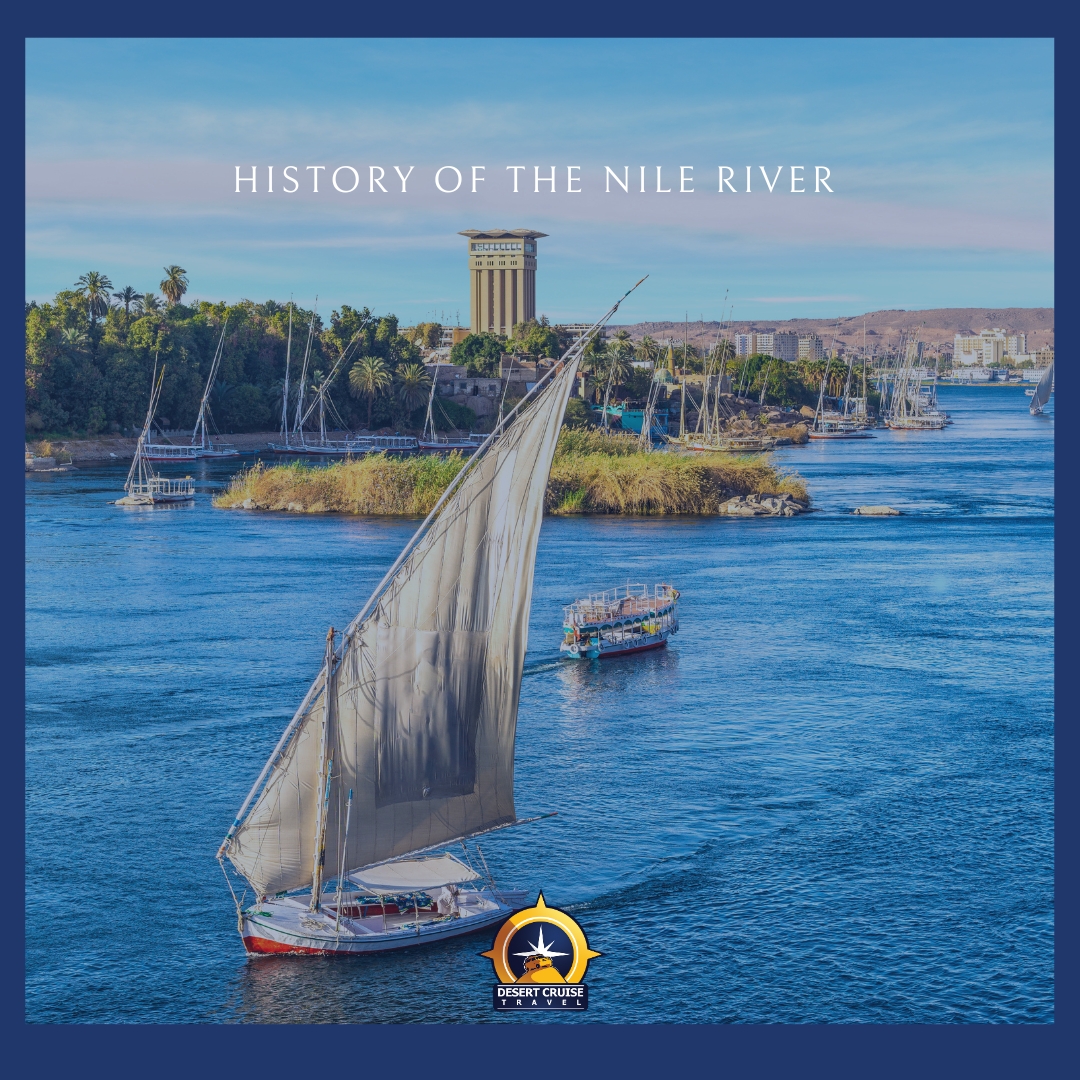The Nile River, an international river that traverses eleven countries including Egypt, Sudan, Congo, and Kenya, is a vital lifeline in northeastern Africa. Spanning approximately 6,853 kilometers, it is the longest river in the world. The Nile is fed by two major tributaries: the Blue Nile, which contributes most of the water and silt, and the White Nile, which is considered the headwater. Here’s everything you need to know about the Nile River:
Nile River in Ancient Egypt
The Nile River played a central role in the development of ancient Egyptian civilization. The Egyptians revered the river as a source of life, and many of their deities were associated with it. Among these were Hapi, the god of the Nile’s annual flooding, and Sobek, the crocodile god linked to the river. The Nile was not only a physical sustainer but also a spiritual symbol of life and rebirth.
The Economic Importance of the Nile River in Egypt
The Nile River has always been critical to Egypt’s economic stability. It supports agricultural activities by providing fertile soil, which has been vital since ancient times. The construction of the Aswan High Dam, for example, harnesses the river’s power to generate electricity and create Lake Nasser, the world’s largest artificial lake, attracting tourists globally. Future projects like the Tushka Project aim to further enhance Egypt’s economy, although it is not yet completed.
Egypt Nile River Facts
The Nile River has been a source of sustenance for millennia. The ancient Egyptians relied on the fertile land along the river to grow staple crops like wheat, used for food, and papyrus, utilized in making paper, baskets, and sandals. Flax, another crop grown along the Nile, was crucial for manufacturing linen clothing. The river also provided drinking water and irrigation, making life in the Egyptian desert possible. Without the Nile, the ancient Egyptian civilization would likely not have thrived.
The Relationship Between the Nile River and the Osiris Myth
The Nile River is deeply intertwined with ancient Egyptian mythology, particularly the story of Osiris and Isis. According to the myth, Osiris was betrayed and killed by his brother Set, who threw Osiris’s body into the Nile. His wife, Isis, searched for and found his body, but Set cut it into pieces and scattered them across Egypt. The only part Isis could not retrieve was Osiris’s phallus, which Set had thrown into the Nile. According to the myth, this part of Osiris fertilized the Nile, symbolizing the river’s life-giving properties. Osiris eventually became the lord of the afterlife and judge of the dead.
Why Does the Nile River Flood
The annual flooding of the Nile, crucial for agriculture, is caused by heavy rains in the Ethiopian highlands and melting snow. The ancient Egyptians believed the flooding was linked to the goddess Isis and celebrated a festival each year in her honor, even offering human sacrifices to show their gratitude.
Things to Do on the Nile River
A Nile River cruise is one of the best ways to experience the wonders of this historic river. Cruise options include:
- Nile Cruise from Aswan to Luxor: Discover the Valley of the Kings, Hatshepsut Temple, Colossi of Memnon, and the Karnak Temple.
- Nile Cruise from Luxor to Aswan: Explore Nubian culture with visits to the Unfinished Obelisk, Philae Temple, and the Aswan High Dam.
- Combined Nile Cruises and Cultural Tours: Extend your adventure with visits to Cairo’s landmarks and relaxing days in Hurghada.
These cruises offer a perfect blend of history, culture, and leisure, making them an unforgettable part of any trip to Egypt.


0 Comment